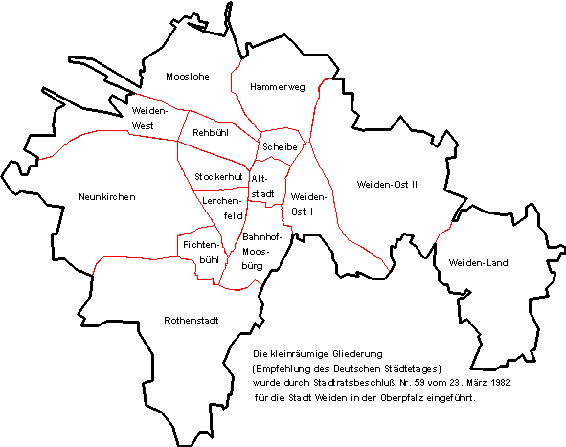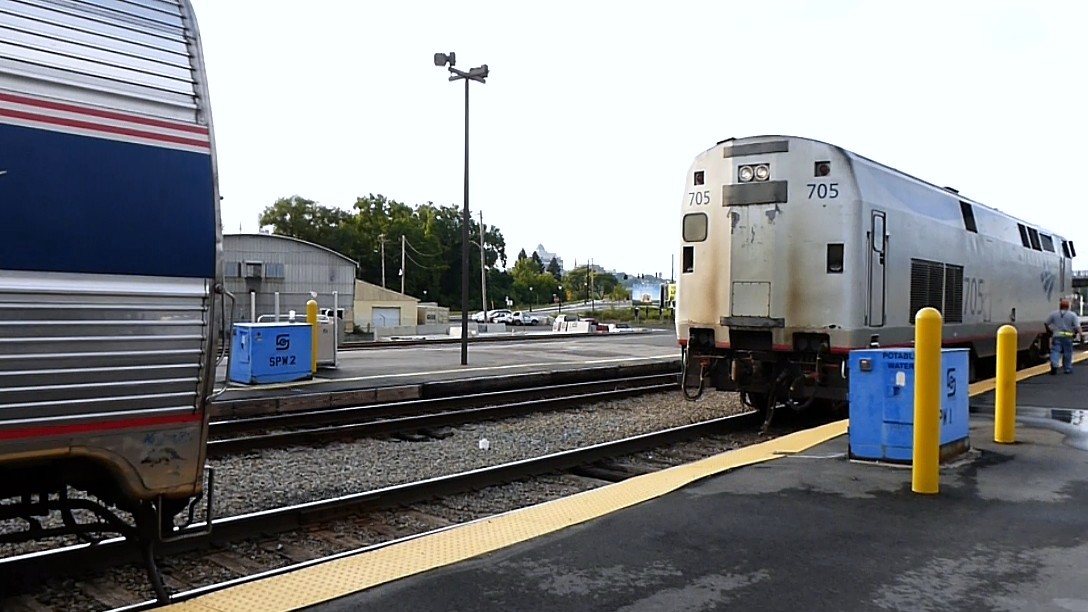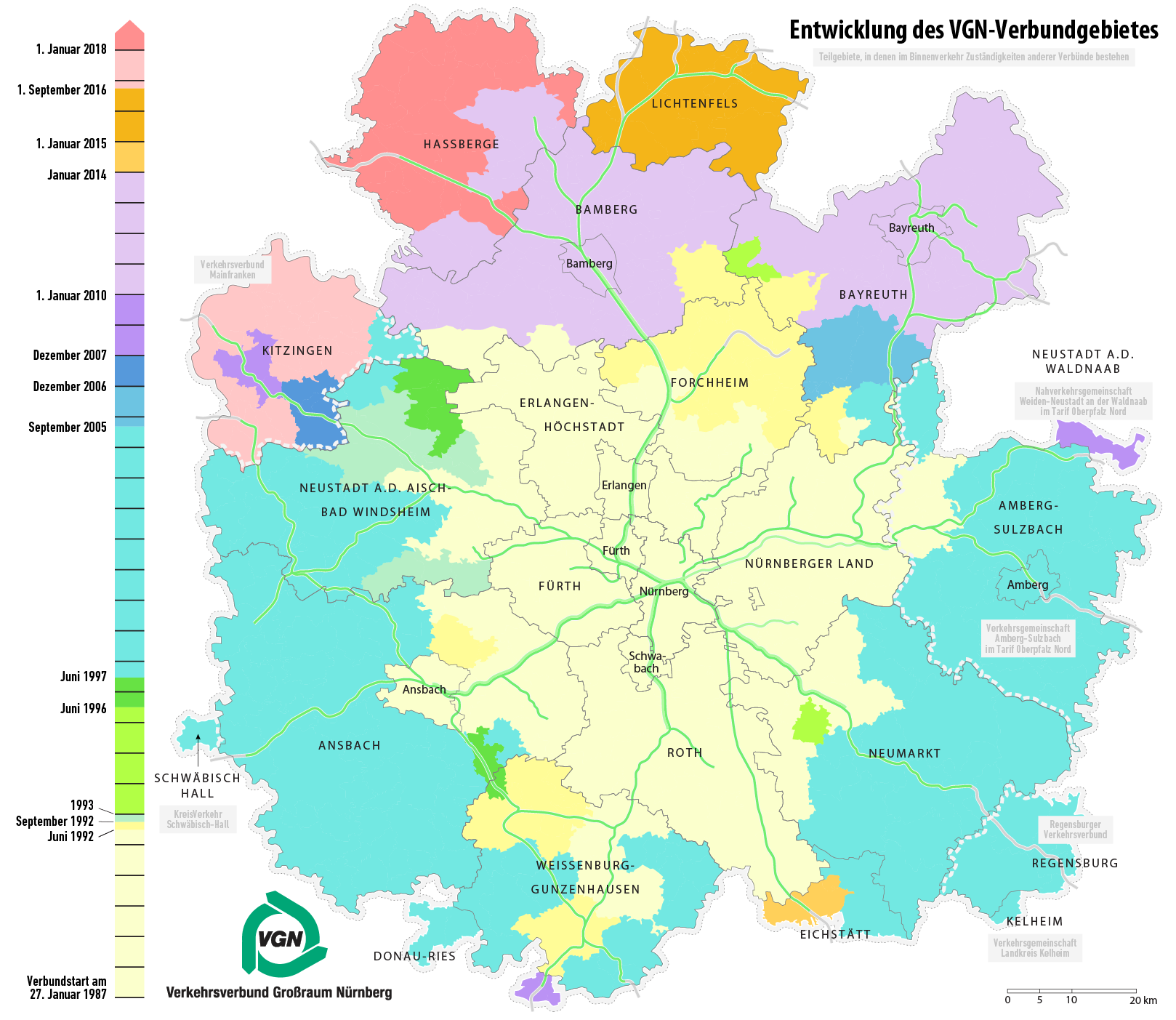|
Neukirchen–Weiden Railway
The Neukirchen–Weiden railway is a 51-kilometre-long main line in Bavaria, Germany. It branches off the Nuremberg–Schwandorf railway at Neukirchen bei Sulzbach-Rosenberg station and runs via Vilseck to Weiden in der Oberpfalz. History The impetus for the construction of the line was a memorandum of 20 July 1869 from the Nuremberg Railway Committee to the Bavarian Eastern Railway Company (''Bayerischen Ostbahnen''). It argued that this route would be the shortest and most economical connection between Nuremberg and Weiden and that the line would also be important for freight traffic to and from Bohemia and central Germany. Construction began in December 1873 after the route planning was completed in August 1872. The rails were supplied by ''Hammerwerk Hellziechen''. The line was officially opened on 15 October 1875. In 1973, the line, which had been built to branch line standards, was upgraded with extensive work to main line standards. Route description The line branc ... [...More Info...] [...Related Items...] OR: [Wikipedia] [Google] [Baidu] |
Bavaria
Bavaria, officially the Free State of Bavaria, is a States of Germany, state in the southeast of Germany. With an area of , it is the list of German states by area, largest German state by land area, comprising approximately 1/5 of the total land area of Germany, and with over 13.08 million inhabitants, it is the list of German states by population, second most populous German state, behind only North Rhine-Westphalia; however, due to its large land area, its population density is list of German states by population density, below the German average. Major cities include Munich (its capital and List of cities in Bavaria by population, largest city, which is also the list of cities in Germany by population, third largest city in Germany), Nuremberg, and Augsburg. The history of Bavaria includes its earliest settlement by Iron Age Celts, Celtic tribes, followed by the conquests of the Roman Empire in the 1st century BC, when the territory was incorporated into the provinces of Ra ... [...More Info...] [...Related Items...] OR: [Wikipedia] [Google] [Baidu] |
Weiden In Der Oberpfalz
Weiden in der Oberpfalz (, ; official abbreviation: Weiden i.d.OPf.; Northern Bavarian: ''Weidn in da Owapfalz'') is a district-free city in Bavaria, Germany. It is located east of Nuremberg and west of the Czech border. Weiden is the second biggest city in the governmental district Oberpfalz, next to Regensburg. A branch of the German Army is located here. History Weiden in der Oberpfalz was first mentioned in a document in 1241 as Weiden. It is assumed that the first settlements in Weiden are dated the year 1000. Located at the intersection of two major trading routes (Goldene Strasse and Magdeburger Strasse), Weiden soon became an important trading center with a population of 2,200 in 1531. Two city fires, the Thirty Years' War and the Plague gave the city setbacks, which it didn't recover from until the end of the 18th Century. Between 1634 and 1635, as well as between 1648 and 1650; Weiden was occupied by Swedish troops. Since 1714 the city fully belonged to the Duchy of ... [...More Info...] [...Related Items...] OR: [Wikipedia] [Google] [Baidu] |
1872 Establishments In Bavaria
Year 187 ( CLXXXVII) was a common year starting on Sunday of the Julian calendar. At the time, it was known as the Year of the Consulship of Quintius and Aelianus (or, less frequently, year 940 ''Ab urbe condita''). The denomination 187 for this year has been used since the early medieval period, when the Anno Domini calendar era became the prevalent method in Europe for naming years. Events By place Roman Empire * Septimius Severus marries Julia Domna (age 17), a Syrian princess, at Lugdunum (modern-day Lyon). She is the youngest daughter of high-priest Julius Bassianus – a descendant of the Royal House of Emesa. Her elder sister is Julia Maesa. * Clodius Albinus defeats the Chatti, a highly organized German tribe that controlled the area that includes the Black Forest. By topic Religion * Olympianus succeeds Pertinax as bishop of Byzantium (until 198). Births * Cao Pi, Chinese emperor of the Cao Wei state (d. 226) * Gu Shao, Chinese official and politic ... [...More Info...] [...Related Items...] OR: [Wikipedia] [Google] [Baidu] |
Railway Lines Opened In 1872
Rail transport (also known as train transport) is a means of transport using wheeled vehicles running in tracks, which usually consist of two parallel steel rails. Rail transport is one of the two primary means of land transport, next to road transport. It is used for about 8% of passenger and freight transport globally, thanks to its energy efficiency and potentially high speed.Rolling stock on rails generally encounters lower frictional resistance than rubber-tyred road vehicles, allowing rail cars to be coupled into longer trains. Power is usually provided by diesel or electric locomotives. While railway transport is capital-intensive and less flexible than road transport, it can carry heavy loads of passengers and cargo with greater energy efficiency and safety. Precursors of railways driven by human or animal power have existed since antiquity, but modern rail transport began with the invention of the steam locomotive in the United Kingdom at the beginning of the 19 ... [...More Info...] [...Related Items...] OR: [Wikipedia] [Google] [Baidu] |
Portion Working
A dividing train is a passenger train that separates into two trains partway along its route, so as to serve two destinations. Inversely, two trains from different origins may be railway coupling, coupled together mid-route to reach a common endpoint. Trains on complex routes may divide or couple multiple times. The general Glossary of rail transport terms, term for coupling two or more trains along their shared route sections is portion working. For example, the westbound ''Empire Builder'' travels from Chicago Union Station to , Washington, where its cars are divided into two trains: one continues to Portland Union Station and one to King Street Station, Seattle. On the eastbound trip, trains from Portland and Seattle are coupled at Spokane before traveling as one train to Chicago. Dividing trains are useful where line capacity is limited, allowing multiple trains to use the same train path, path over a congested part of a network. The common sections will often be the busiest ... [...More Info...] [...Related Items...] OR: [Wikipedia] [Google] [Baidu] |
DBAG Class 612
The DBAG Class 612 is a two car, tilting, diesel multiple unit operated by the Deutsche Bahn for fast regional rail services on unelectrified lines. General information The Class are a two car tilting DMU built between 1998 and 2003 by Adtranz in Hennigsdorf which later became Bombardier Transportation. The class are also known as RegioSwingers. They were developed to replace the problematic DB Class 611. The sets worked fine between 1998 and 2004 until cracks were detected in a number of wheelsets and so the tilting system was disabled and curves on lines had to have reduced speed limits, which affected the timetables and connections. From 2005 the trains had the wheelsets replaced and the tilting system was back up and running. The maximum tilt is 8°. After ICE TD class 605 was grounded due to a fracture of an axle in one unit, it was replaced by class 612 on the Dresden Dresden (; ; Upper Saxon German, Upper Saxon: ''Dräsdn''; , ) is the capital city of the State ... [...More Info...] [...Related Items...] OR: [Wikipedia] [Google] [Baidu] |
Regional-Express
In Germany, Luxembourg and Austria, the Regional-Express (; RE, or in Austria: REX) is a type of regional train. It is similar to a semi-fast train, with a top speed of and an average speed of about as it calls at fewer stations than ''Regionalbahn'' (in Austria: '' Regionalzug'') or S-Bahn trains, but stops more often than ''Intercity'' or ''Intercity Express'' services. Operations The first Regional-Express services were operated by DB Regio, though since the liberalisation of the German rail market (''Bahnreform'') in the 1990s many operators have received franchise rights on lines from the federal states. Some private operators currently operate trains that are similar to a Regional-Express service, but have decided to use their own names for the sake of brand awareness instead. Regional-Express services are carried out with a variety of vehicles such as DMUs (of Class 612), EMUs (of Class 425 or 426) or, most commonly, electric or diesel locomotives with doub ... [...More Info...] [...Related Items...] OR: [Wikipedia] [Google] [Baidu] |
Regionalbahn
The ''Regionalbahn'' (; lit. Regional train; abbreviated ''RB'') is a train categories in Europe, type of Regional rail, local passenger train (stopping train) in Germany. It is similar to the Regionalzug (R) and Regio (Swiss railway train), Regio (R) train categories in neighboring Austria and Switzerland, respectively. Service ''Regionalbahn'' trains usually call at all stations on a given line, with the exception of ''RB'' trains within S-Bahn networks - these may only call at selected stations. Thus, they rank below the ''Regional-Express'' train, which regularly stops only at selected stations on its route. Operators ''RB'' trains are subject to franchising by the States of Germany, federal states of Germany; whilst many ''RB'' trains are still operated by DB Regio, the local traffic division of the former monopolist Deutsche Bahn, franchises often go to other companies, like Abellio Deutschland, Eurobahn or Transdev Germany. There is no obligation to use the term ''Regi ... [...More Info...] [...Related Items...] OR: [Wikipedia] [Google] [Baidu] |
Verkehrsverbund Großraum Nürnberg
The (VGN; Transport Association Region Nuremberg) is the transit authority of the city of Nuremberg, the second largest city of the Germany, German state of Bavaria. Its jurisdiction covers the city and its surrounding area, responsible for the Nuremberg S-Bahn commuter trains, the Nuremberg U-Bahn, the Nuremberg tramway and buses. While not co-extensive with the wider Nuremberg Metropolitan Region, it covers most of it with the exception of several smaller towns and rural areas on the periphery, as well as Sonneberg in the neighboring state of Thuringia. The VGN coordinates transport and fares in area comprising the city of Nuremberg, Fürth, Erlangen, Schwabach, Bayreuth, Bamberg, Coburg, Ansbach, Amberg, Hof, Bavaria, Hof and 21 surrounding districts. It is jointly owned by the state of Bavaria, by the city of Nuremberg, Fürth, Erlangen, Schwabach, Bayreuth, Bamberg, Coburg, Ansbach, Amberg, Hof and the 21 surrounding districts, which are: * Landkreis Amberg-Sulzbach * Land ... [...More Info...] [...Related Items...] OR: [Wikipedia] [Google] [Baidu] |
Tilting Train
A tilting train is a train that has a mechanism enabling increased speed on regular rail tracks. As a train (or other vehicle) rounds a curve at speed, objects inside the train experience centrifugal force. This can cause packages to slide about or seated passengers to feel squashed by the outboard armrest, and standing passengers to lose their balance. In such excessive speeds, it generates longitudinal force that can cause the train to physically tilt on one side, eventually causing it to Derailment, derail. Tilting trains are designed to counteract this by tilting the carriages towards the inside of the curve, thus compensating for the g-force. The train may be constructed such that inertial forces cause the tilting (''passive tilt''), or it may have a computer-controlled powered mechanism (''active tilt''). The first passive Pendulum car, tilting car design was built in the US in 1937, and an improved version was built in 1939. The beginning of World War II ended development. ... [...More Info...] [...Related Items...] OR: [Wikipedia] [Google] [Baidu] |
Nuremberg
Nuremberg (, ; ; in the local East Franconian dialect: ''Nämberch'' ) is the Franconia#Towns and cities, largest city in Franconia, the List of cities in Bavaria by population, second-largest city in the States of Germany, German state of Bavaria, and its 544,414 (2023) inhabitants make it the List of cities in Germany by population, 14th-largest city in Germany. Nuremberg sits on the Pegnitz (river), Pegnitz, which carries the name Regnitz from its confluence with the Rednitz in Fürth onwards (), and on the Rhine–Main–Danube Canal, that connects the North Sea to the Black Sea. Lying in the Bavarian Regierungsbezirk, administrative region of Middle Franconia, it is the largest city and unofficial capital of the entire cultural region of Franconia. The city is surrounded on three sides by the , a large forest, and in the north lies (''garlic land''), an extensive vegetable growing area and cultural landscape. The city forms a continuous conurbation with the neighbouring ... [...More Info...] [...Related Items...] OR: [Wikipedia] [Google] [Baidu] |






